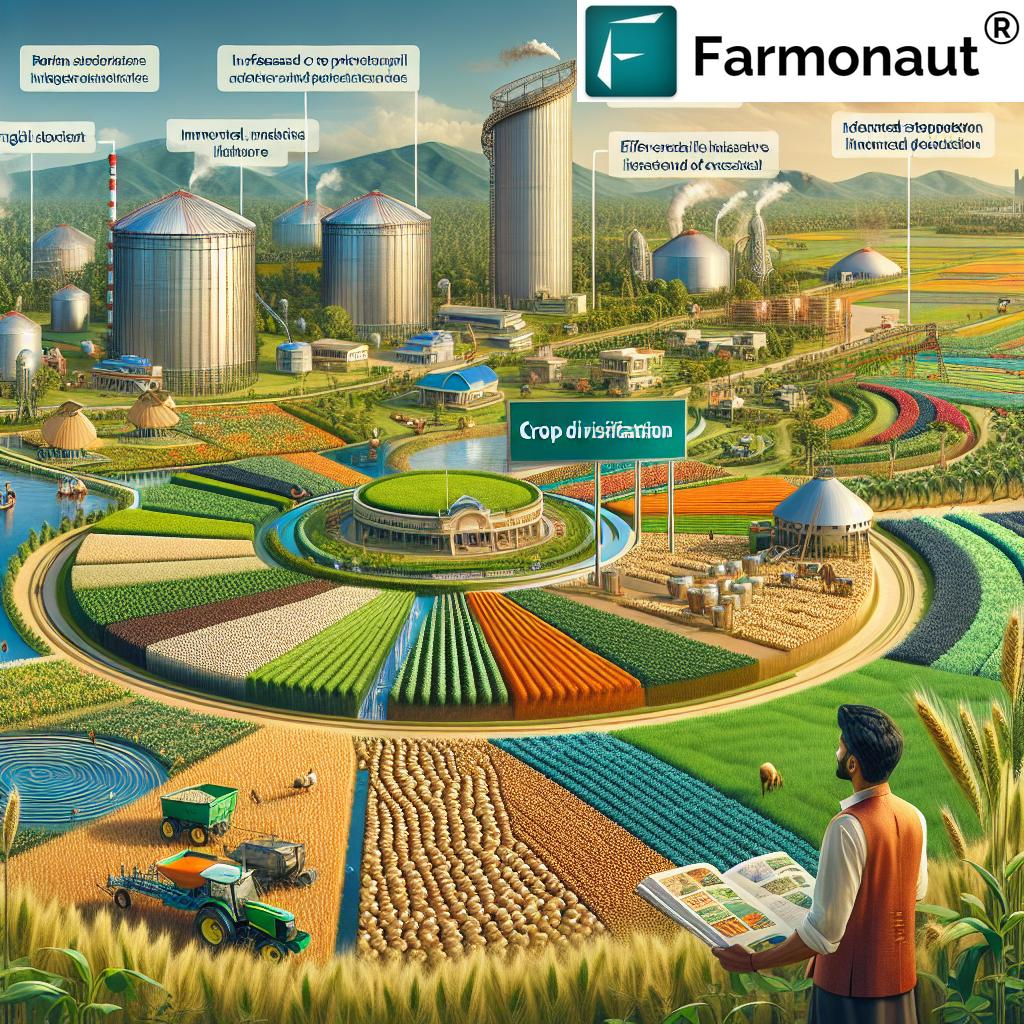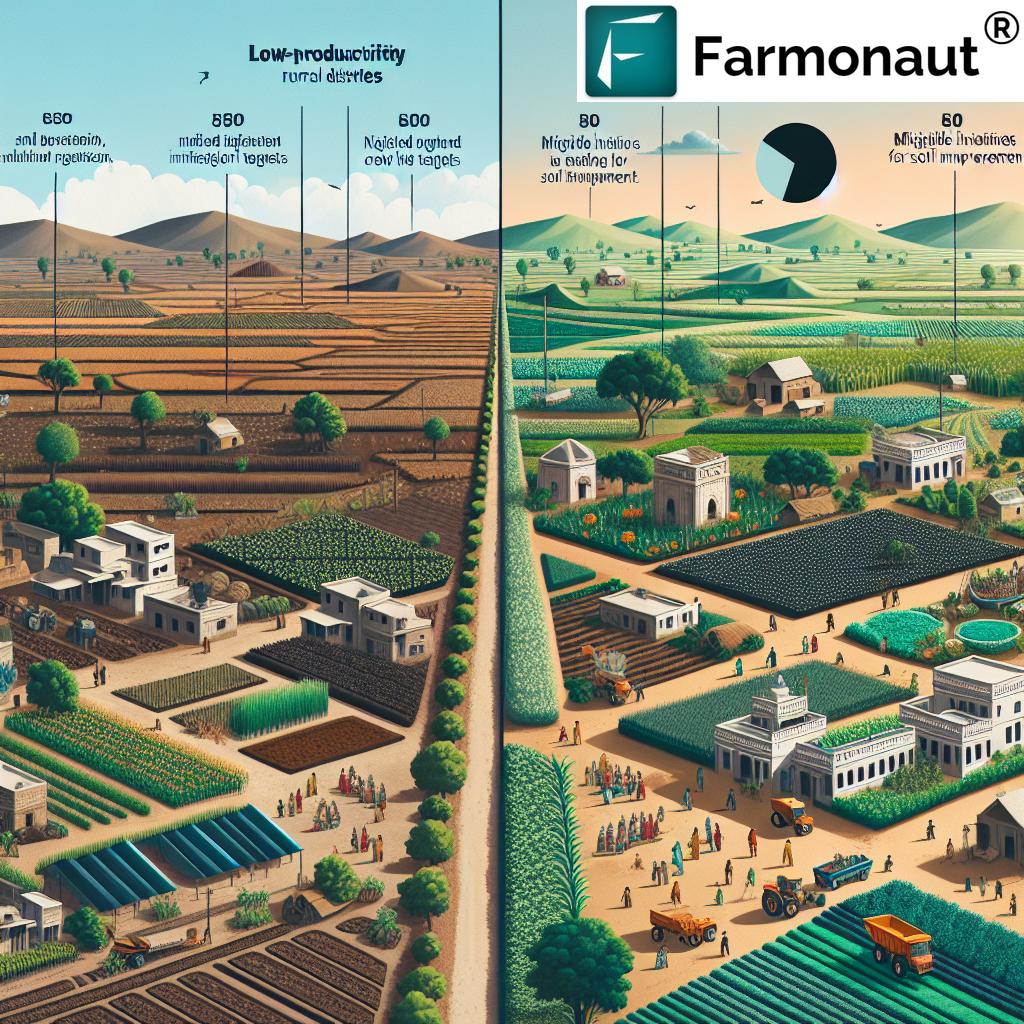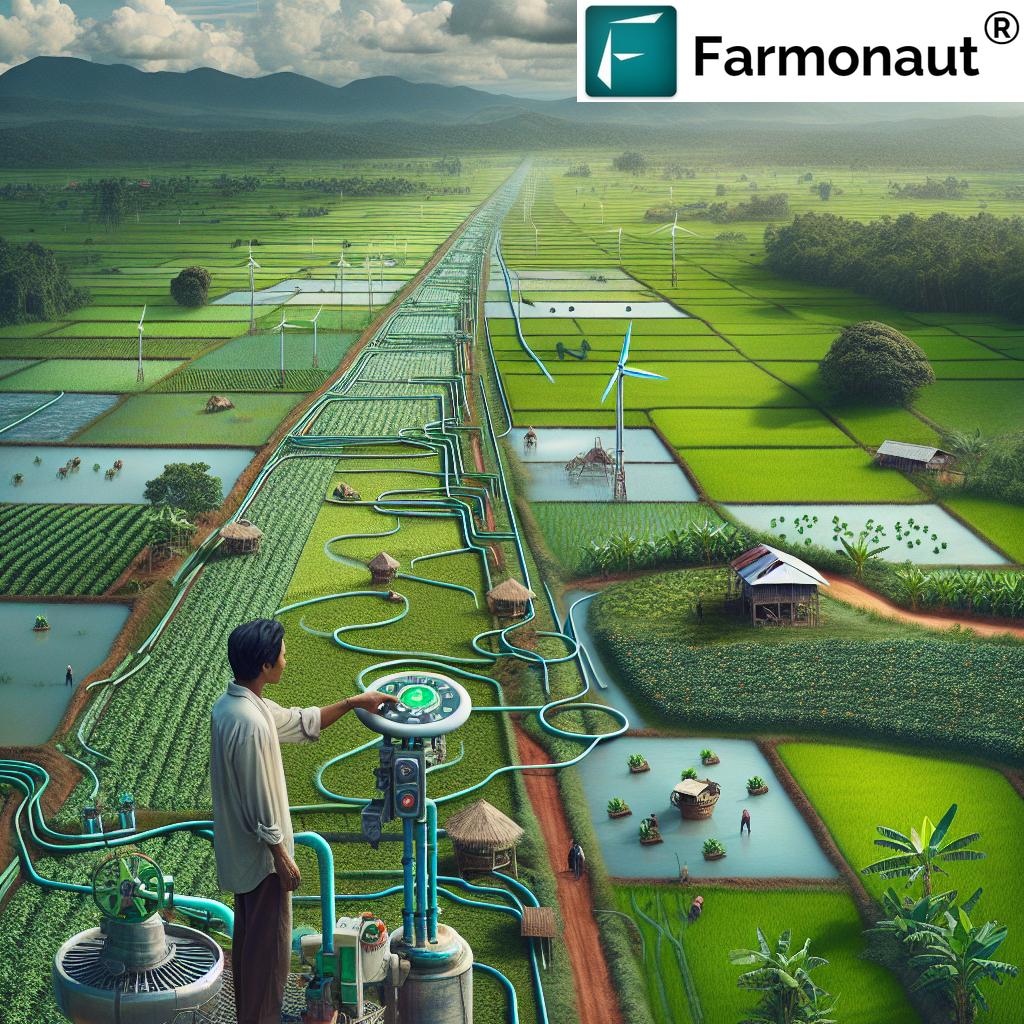Boosting India’s Agricultural Sector: 2025 Budget Unveils Innovative Schemes for Sustainable Farming and Rural Growth
“India’s 2025 Budget targets 100 low-productivity districts for agricultural transformation, potentially impacting 1.7 crore farmers.”
As we delve into the groundbreaking announcements of India’s 2025 Union Budget, we find ourselves at the cusp of a revolutionary transformation in the agricultural sector. The unveiling of the Prime Minister’s Dhan-Dhaanya Krishi Yojana marks a significant milestone in our nation’s journey towards sustainable farming and rural development. This comprehensive scheme, targeting 100 low-productivity districts, is set to redefine the landscape of Indian agriculture, promising a brighter future for approximately 1.7 crore farmers.
The Prime Minister’s Dhan-Dhaanya Krishi Yojana: A Beacon of Hope
The Prime Minister’s Dhan-Dhaanya Krishi Yojana stands as the cornerstone of the 2025 Budget’s agricultural initiatives. This ambitious program draws inspiration from the successful Aspirational Districts Programme and aims to address the multifaceted challenges faced by India’s farming community. Let’s explore the key components of this transformative scheme:
| Initiative Component | Target Area/Beneficiaries | Estimated Impact | Implementation Timeline |
|---|---|---|---|
| Low-productivity district development | 100 identified districts | Improved agricultural output in underperforming regions | 2025-2030 |
| Irrigation system enhancement | Rural areas with inadequate water resources | Increased crop yields and water efficiency | 2025-2028 |
| Sustainable farming practices promotion | All participating districts | Reduced chemical dependency and improved soil health | 2025-2030 |
| Crop diversification encouragement | Farmers in mono-crop regions | Enhanced farmer income and ecosystem resilience | 2025-2029 |
| Credit accessibility improvement | Small and marginal farmers | Increased financial inclusion and farm investments | 2025-2027 |
| Edible oils and seeds self-sufficiency | National level | Reduced import dependency and improved food security | 2025-2031 |
| Pulses production boost | Major pulse-growing regions | Meeting domestic demand and potential export surplus | 2025-2029 |
| Makhana Board establishment | Bihar | Enhanced production, processing, and market access for Makhana | 2025-2026 |
| Post-harvest storage solutions | Panchayat and block levels | Reduced crop wastage and improved farmer income | 2025-2028 |
This comprehensive approach underscores the government’s commitment to addressing the root causes of agricultural challenges while promoting sustainable growth and rural prosperity.
Enhancing Agricultural Productivity through Modern Techniques
One of the primary focuses of the Dhan-Dhaanya Krishi Yojana is to boost agricultural productivity in low-output districts. By implementing modern farming techniques and improved agricultural practices, we aim to significantly increase yields and farmer incomes. Here’s how this initiative plans to achieve these goals:
- Precision Agriculture: Introducing technologies like satellite-based crop monitoring and AI-driven advisory systems to optimize resource usage and improve decision-making.
- Soil Health Management: Promoting techniques to enhance soil fertility and reduce dependency on chemical inputs.
- Water Management: Implementing efficient irrigation systems and promoting water-conserving crops to address water scarcity issues.
- Mechanization: Encouraging the use of modern farm equipment to increase efficiency and reduce labor costs.
These advancements in agricultural technology are crucial for sustainable farming practices in India and will play a pivotal role in improving rural infrastructure.

In this context, innovative solutions like those offered by Farmonaut can play a crucial role in realizing the goals of the Dhan-Dhaanya Krishi Yojana. Farmonaut’s satellite-based farm management solutions provide real-time crop health monitoring, AI-based advisory systems, and resource management tools, aligning perfectly with the government’s vision for modernizing Indian agriculture.
Promoting Crop Diversification for Sustainable Growth
Crop diversification is another key aspect of the Indian agricultural budget 2025. By encouraging farmers to grow a variety of crops, the government aims to achieve multiple objectives:
- Reducing the risk of crop failure due to pests or adverse weather conditions
- Improving soil health through crop rotation
- Enhancing biodiversity in agricultural ecosystems
- Increasing farmers’ income by tapping into diverse market demands
To support this initiative, the government plans to provide:
- Subsidies for seeds of alternative crops
- Training programs on crop rotation and intercropping techniques
- Market linkages for newly introduced crops
- Research support for developing region-specific crop varieties
“The Prime Minister’s Dhan-Dhaanya Krishi Yojana aims to achieve self-sufficiency in edible oils and seeds, boosting domestic pulse production.”
This focus on diversification aligns with the broader goal of achieving self-sufficiency in edible oils and seeds, as well as boosting domestic pulse production. By reducing dependence on imports and strengthening local production, India aims to enhance its food security and agricultural sustainability.
Improving Rural Infrastructure and Irrigation Systems
A significant portion of the budget allocation is dedicated to improving rural infrastructure, with a special emphasis on enhancing irrigation systems. This initiative recognizes the critical role of water management in agricultural productivity and sustainability. The key aspects of this infrastructure push include:
- Construction and renovation of irrigation canals
- Implementation of micro-irrigation systems like drip and sprinkler irrigation
- Development of rainwater harvesting structures
- Modernization of existing water storage facilities
These improvements in irrigation infrastructure are expected to have a transformative impact on agricultural productivity, especially in regions prone to water scarcity. By ensuring a more reliable water supply, farmers can reduce their dependence on monsoon rains and potentially increase their crop yields significantly.

To complement these infrastructure improvements, farmers can leverage advanced technologies for efficient water management. For instance, Farmonaut’s satellite-based monitoring system can provide valuable insights into soil moisture levels, helping farmers optimize their irrigation practices. Learn more about these innovative solutions at Farmonaut’s web app.
Enhancing Credit Accessibility for Farmers
One of the most significant challenges faced by Indian farmers is access to credit. The 2025 Budget addresses this issue head-on by introducing several measures to improve financial inclusion in the agricultural sector:
- Expanding the network of rural banks and financial institutions
- Simplifying loan application processes for farmers
- Introducing flexible repayment terms tailored to agricultural cycles
- Implementing digital platforms for easier loan disbursement and management
These initiatives aim to ensure that farmers have access to both short-term and long-term credit, enabling them to invest in better seeds, equipment, and technologies. Improved credit accessibility is expected to play a crucial role in driving agricultural growth and modernization.
The National Mission for Edible Oils and Seeds
A cornerstone of the 2025 Budget’s agricultural initiatives is the National Mission for Edible Oils and Seeds. This six-year mission aims to make India self-sufficient in these critical agricultural commodities. The key objectives of this mission include:
- Increasing domestic production of oilseeds
- Enhancing processing capabilities for edible oils
- Promoting research and development in high-yielding oilseed varieties
- Improving storage and distribution infrastructure for oilseeds and edible oils
As part of this mission, central agencies are tasked with procuring essential legume crops like tur, urad, and masur to meet domestic demand over the next four years. This strategic approach not only aims to reduce import dependency but also to provide better price realization for farmers growing these crops.
Establishing the Makhana Board in Bihar
In a move to support regional agricultural specialties, the 2025 Budget allocates resources for the establishment of a Makhana Board in Bihar. This initiative recognizes the growing importance of Makhana (fox nut) as a nutritious and economically valuable crop. The Makhana Board will be responsible for:
- Facilitating processing and value addition of Makhana
- Ensuring better market access for Makhana producers
- Promoting research and development in Makhana cultivation
- Supporting the development of Makhana-based products
This focused approach on a regional specialty crop demonstrates the government’s commitment to promoting diverse agricultural products and supporting local economies.
Addressing Post-Harvest Challenges
Recognizing that agricultural productivity gains can be easily lost due to inadequate post-harvest management, the 2025 Budget places significant emphasis on improving storage and handling facilities. Key initiatives in this area include:
- Construction of modern storage facilities at panchayat and block levels
- Implementation of cold chain infrastructure for perishable produce
- Introduction of technologies for better quality control and grading of agricultural produce
- Development of efficient transportation systems for agricultural goods
These improvements in post-harvest infrastructure are expected to significantly reduce wastage, improve the quality of produce reaching markets, and ultimately enhance farmer incomes.
Leveraging Technology for Agricultural Growth
The 2025 Budget recognizes the transformative potential of technology in agriculture. To this end, it promotes the adoption of various technological solutions to enhance productivity and sustainability. Some key technological interventions include:
- Promotion of precision agriculture techniques
- Implementation of IoT (Internet of Things) devices for farm monitoring
- Use of drones for crop surveillance and pesticide application
- Development of AI-powered crop advisory systems
In this context, solutions like those offered by Farmonaut can play a crucial role. Farmonaut’s satellite-based crop monitoring and AI advisory systems align perfectly with the government’s vision for tech-driven agricultural growth. Explore these innovative solutions at Farmonaut’s web application.
Promoting Sustainable Agriculture Practices
Sustainability is a key theme running through the 2025 Budget’s agricultural initiatives. The government recognizes that long-term agricultural growth can only be achieved through practices that preserve and enhance natural resources. Some of the sustainable agriculture practices being promoted include:
- Organic farming techniques
- Integrated pest management
- Conservation agriculture
- Agroforestry
These practices aim to reduce the environmental impact of agriculture while maintaining or improving productivity. By promoting such sustainable methods, the government hopes to ensure the long-term viability of India’s agricultural sector.
Supporting Farmer Education and Skill Development
Recognizing that the success of these initiatives depends largely on the skills and knowledge of farmers, the 2025 Budget allocates significant resources for farmer education and skill development. Key aspects of this initiative include:
- Establishment of farmer training centers in each district
- Development of mobile apps and online platforms for agricultural education
- Collaborations with agricultural universities for extension services
- Promotion of farmer-to-farmer learning programs
These educational initiatives aim to empower farmers with the knowledge and skills needed to adopt modern farming practices and technologies effectively.
Conclusion: A New Era for Indian Agriculture
The 2025 Union Budget’s focus on agriculture, epitomized by the Prime Minister’s Dhan-Dhaanya Krishi Yojana, marks the beginning of a new era for Indian farming. By addressing key challenges such as low productivity, inadequate infrastructure, and limited access to credit, while promoting sustainable practices and technological adoption, these initiatives promise to transform the agricultural landscape of India.
As we move forward, the success of these programs will depend on effective implementation and the active participation of farmers, agribusinesses, and other stakeholders. With a comprehensive approach that balances productivity, sustainability, and farmer welfare, India is well-positioned to achieve its goals of food security, rural prosperity, and agricultural self-sufficiency.
For farmers and agribusinesses looking to leverage technology in line with these government initiatives, solutions like those offered by Farmonaut can be invaluable. Explore how satellite-based crop monitoring and AI-driven advisory systems can enhance your agricultural operations by visiting Farmonaut’s web application.
FAQs
- What is the Prime Minister’s Dhan-Dhaanya Krishi Yojana?
It’s a comprehensive agricultural scheme unveiled in the 2025 Union Budget, targeting 100 low-productivity districts to improve rural infrastructure, enhance irrigation systems, and promote sustainable farming practices. - How many farmers are expected to benefit from this scheme?
Approximately 1.7 crore farmers are expected to benefit from the Prime Minister’s Dhan-Dhaanya Krishi Yojana. - What are the main objectives of the National Mission for Edible Oils and Seeds?
The mission aims to make India self-sufficient in edible oils and seeds production, reduce import dependency, and boost domestic production of pulses. - What is the purpose of establishing a Makhana Board in Bihar?
The Makhana Board will facilitate processing, value addition, and better market access for Makhana (fox nut) producers in Bihar, supporting the growth of this regional specialty crop. - How does the 2025 Budget address post-harvest challenges?
The budget allocates resources for improving storage facilities at panchayat and block levels, implementing cold chain infrastructure, and developing efficient transportation systems for agricultural produce.
Earn With Farmonaut: Earn 20% recurring commission with Farmonaut’s affiliate program by sharing your promo code and helping farmers save 10%. Onboard 10 Elite farmers monthly to earn a minimum of $148,000 annually—start now and grow your income!
Learn more about our affiliate program: Farmonaut Affiliate Program
Explore Farmonaut’s solutions:
For developers interested in integrating Farmonaut’s technology:
















